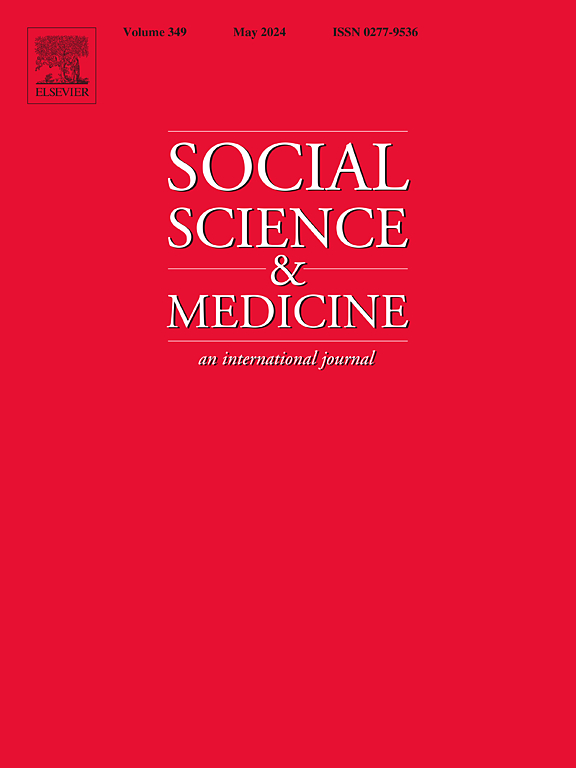Obstetric violence in the context of community violence: The case of Mexico
IF 4.9
2区 医学
Q1 PUBLIC, ENVIRONMENTAL & OCCUPATIONAL HEALTH
引用次数: 0
Abstract
This study examines the relationship between community violence and obstetric violence in Mexico, where the so-called “War on Drugs” has led to sustained high levels of homicides and one-third of pregnant people report experiencing abusive treatment from healthcare providers during childbirth. We combine unique nationally representative survey data on experiences of obstetric violence for births that occurred between 2016 and 2021 with administrative homicide data at the month-municipality level. Using fixed effects models, we investigate how different manifestations of obstetric violence relate to community violence in the short-, medium-, and long-term. Results suggest that the intensity of community violence matters for obstetric violence. Specifically, we find that sustained high-intensity homicidal violence is associated with an increased risk of mistreatment at childbirth, particularly in the form of physical abuse and non-consensual care. Associations are stronger among adolescent, low-educated, and urban respondents. Addressing obstetric violence requires recognising the structural role of sustained high-intensity community violence and the normalisation of violent behaviour that exposure to such environmental stressors may create.
社区暴力背景下的产科暴力:墨西哥的案例
本研究探讨了墨西哥社区暴力与产科暴力之间的关系,墨西哥所谓的 "禁毒战争 "导致凶杀案居高不下,三分之一的孕妇表示在分娩过程中遭受过医疗服务提供者的虐待。我们将关于 2016 年至 2021 年期间分娩的产科暴力经历的具有全国代表性的独特调查数据与月-市级凶杀案行政数据相结合。利用固定效应模型,我们研究了产科暴力的不同表现形式与社区暴力在短期、中期和长期的关系。结果表明,社区暴力的强度与产科暴力的关系密切。具体而言,我们发现持续的高强度杀人暴力与分娩时遭受虐待的风险增加有关,尤其是以身体虐待和未经同意的护理形式出现的虐待。这种关联在青少年、低学历和城市受访者中更为明显。要解决产科暴力问题,就必须认识到持续高强度社区暴力的结构性作用,以及暴露于这种环境压力下可能造成的暴力行为正常化。
本文章由计算机程序翻译,如有差异,请以英文原文为准。
求助全文
约1分钟内获得全文
求助全文
来源期刊

Social Science & Medicine
PUBLIC, ENVIRONMENTAL & OCCUPATIONAL HEALTH-
CiteScore
9.10
自引率
5.60%
发文量
762
审稿时长
38 days
期刊介绍:
Social Science & Medicine provides an international and interdisciplinary forum for the dissemination of social science research on health. We publish original research articles (both empirical and theoretical), reviews, position papers and commentaries on health issues, to inform current research, policy and practice in all areas of common interest to social scientists, health practitioners, and policy makers. The journal publishes material relevant to any aspect of health from a wide range of social science disciplines (anthropology, economics, epidemiology, geography, policy, psychology, and sociology), and material relevant to the social sciences from any of the professions concerned with physical and mental health, health care, clinical practice, and health policy and organization. We encourage material which is of general interest to an international readership.
 求助内容:
求助内容: 应助结果提醒方式:
应助结果提醒方式:


